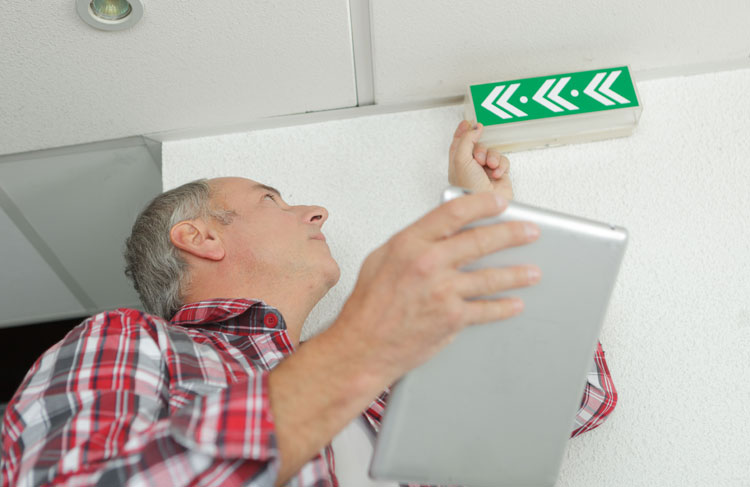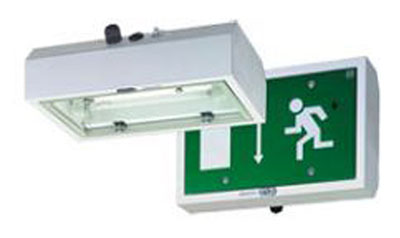Emergency Lighting Systems
Emergency lighting is one of the essential life safety systems that has to be provided by an owner or responsible person of any premises that constitutes a place of work.
Emergency lighting systems should, if correctly designed, installed and maintained, reduce the possibility of an accident or loss of life in the event of an electrical power loss in an emergency situation, by providing safe illumination of escape routes from the premises.
Emergency lighting service is usually combined with the fire alarm service visits to ensure an ongoing cost effective solution for the customer.

Emergency Lighting Maintenance
We service your emergency lighting units over a twelve-month period, usually carried out in 1 or 2 visits.
Our engineers are experienced in both maintaining emergency lights and fire safety, so you can be confident all your equipment is maintained to the relevant British Standard.
A routine service visit to maintain the emergency lighting system to BS5266 to ensure it operates effectively.
Wherever emergency lights are in place.
A suitably trained engineer.
Any emergency lighting system must be in good working order. There are penalties for non-compliance.
A six monthly or annual service is recommended, during which the annual battery drain will be conducted as per the British Standards.

Emergency Lighting Testing (Monthly)
Our experienced testers will conduct emergency lighting tests and inspect all units to ensure they’re functioning correctly.
A regular test of the emergency lights to ascertain that each emergency lamp illuminates correctly.
Every property or tenant demise that has emergency lights and is not a single private domestic premises.
A competent or site-specifically trained person.
Test facilities often take the form of a fishtail key inserted in a specific switch, either near the main fuse board or relevant light switches.
Any emergency lighting system must be in good working order. There are penalties for non-compliance.
Monthly, as recommended in the relevant British Standard. Or as determined by the fire risk assessment.
